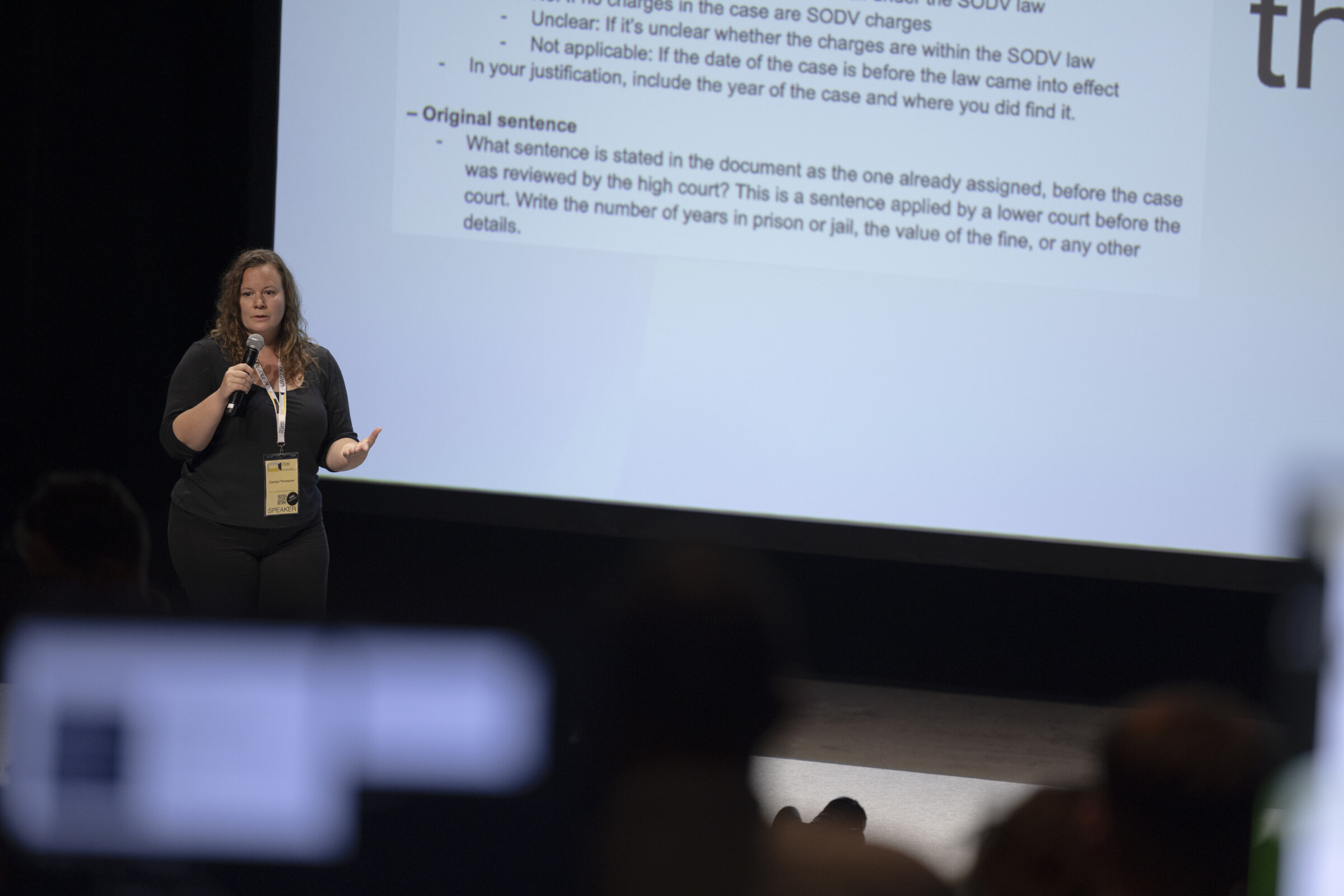Data journalists Carolyn Thompson and Sotiris Sideris discuss the importance of reporting on gender-based violence in a systemic context, focusing on the factors that enable such behaviors rather than just the individual perpetrators. Greta Hirschberg, a University of Göteborg graduate, interviewed them for the Pop-Up Newsroom of the iMEdD’s International Journalism Forum 2024.
What journalists can do to increase transparency in algorithmic systems

AI and opaque algorithms increasingly drive life-altering outcomes, shaping everything from online content to government decisions. As their influence expands, how can journalists push for greater accountability? Ojooluwa Ibiloye, a University of Delaware doctoral student and Pop-Up Newsroom reporter, attended the panel and spoke with experts to gather insights on how journalists can uncover the inner workings of AI and expose life-shaping algorithms.
When discussing gender-based violence and who should be held accountable “a mistake people make is thinking that there is just one responsible person, but it’s very rarely one person,” said Carolyn Thompson emphasizing the need for a more nuanced narrative in gender-based violence stories to ensure accountability.
Carolyn Thompson, a freelance data and investigative journalist and editor at the Center for Collaborative Investigative Journalism (CCIJ), along with her colleague Sotiris Sideris, the data editor at CCIJ are dedicated to reshaping perceptions of gender-based violence and advocate for a more thoughtful approach to how these stories are told.
Gender-based violence refers to violent acts that target individuals based on their gender. While women are often thought to be the primary victims of these heinous acts, it is important to recognize that men also suffer the repercussions of such crimes.
According to Thompson and Sideris, their investigation should try to present this type of violence not as separate offenses, but as a systemic problem: to focus on the structures, systems, and institutions that allow gender-based violence to happen. “You can be responsible because you committed a crime,” Thompson says, “or because you are complicit; creating those systems and enabling them also makes you guilty.” Sideris pointed to past investigations showing how some major institutions, such as the police, local churches, and legal systems not only failed to stop these crimes but sometimes even supported them.

Steps for investigating gender-based violence
At the 2024 iMEdD International Journalism Forum, Thompson and Sideris showcased their investigative work during the session “From Anecdote to Investigation: Techniques for Covering Gender-based Violence”. They shared insights on how journalists should report on, analyze, and frame gender-based violence. They explained how, even though there is a lot of reporting on gender-based violence, there is not enough being done to explain why this is.
They also provided a series of steps journalists can take to dig deeper into these incidents and be able to put the accountability not just on the perpetrator, but also on those that enable, sustain, and tolerate the environment in which these crimes take place.
1st step: Map possible data sources. Look into documents, numbers, photos, media, court records, etc., to see what the situation in that specific region is regarding the topic you are investigating.
2nd step: Conduct a keyword search and file analysis using tools like Google Pinpoint, OCR, and Amazon’s Textract to identify the terms in the data that are relevant to your needs.
3rd step: Ask the data questions: What do you want to find in the data? What pattern are you trying to prove? Typical questions include the age of the victim, gender, relationship to the perpetrator, etc.
4th step: Review the documents and utilize AI software, such as ChatGPT, to answer the questions identified in the previous step.
5th step: Examine the data closely, as this preliminary analysis will help you visualize patterns and interpret new findings effectively.
6th step: Check the data before publication manually. Make sure to go through the data manually, as AI can make mistakes.
7th step: Review findings with an expert; this will provide you with extra information and give you a bigger sense of the context in which these data findings came from.
8th step: Write your journalistic piece.
Shifting Perspectives
Thompson and Sideris create impactful articles that engage readers and prompt them to reflect on the world around them. They explain the dangers of sensationalizing these stories with “gory details and focusing too much on the victim instead of on the context” in which these incidents occur, explains Thompson.

They begin with a personal experience. ‘This intimate portrayal of what a person went through serves as a pathway to explain the broader context and patterns surrounding this act,’ Thompson says. Their data findings (see Step 1), which provide context for the crime and form the core of the investigation, are presented through visualizations. As Sideris notes, ‘Data visualization takes complex issues out of the numbers and presents them in a way that’s easy for the audience to grasp.
Thompson and Sideris conclude that the most important thing people should take into consideration when reporting and learning about gender-based violence is both listening and being open to the thought that the ideas we have about the world and the systems we live in may be incorrect. “We rarely know the full picture of the truth,” Thompson said. The co-panellist’s investigations into gender-based violence prove to be a testament of the necessity to rethink the structures that surround us, reframe the concept of accountability and reflect on our own perceptions of the world.
You can re-watch the discussion here.
Check out all Pop-Up Newsroom 2024 stories here.